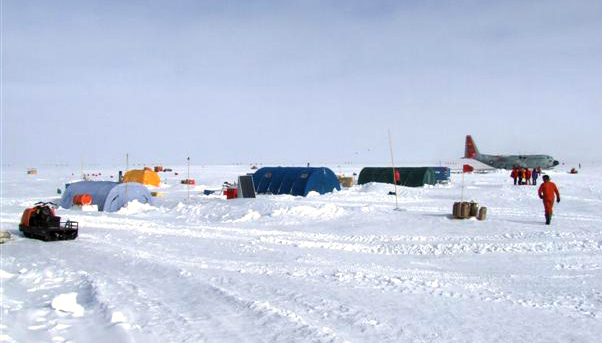Rapid changesRecent ice loss in East Antarctica not accounted for in SCAR reportPosted December 18, 2009
A study published in November that suggested the East Antarctic Ice Sheet might be losing ice to the ocean did not make it into a major new climate report produced by the Scientific Committee on Antarctic Research (SCAR) Using data from a joint NASA-German satellite mission, researchers from the University of Texas at Austin Scientists already know the marine-based West Antarctic Ice Sheet is contributing to sea level rise, its stability more at risk because much the bedrock it sits upon is under water. Now they may have to account for the larger, thicker East Antarctic Ice Sheet, which contains enough ice to raise sea level by as much as 60 meters. Robert Bindschadler “It’s like buying a computer. The minute you’ve got your computer at home it’s out of date,” noted Bindschadler, chief scientist of the Hydrospheric and Biospheric Sciences Laboratory at NASA’s Goddard Space Flight Center “When things are changing so fast — and this is one of those situations where the Antarctic is changing really fast — [the SCAR report] is unable to include the latest reports and measurements,” he added. The December report from SCAR, Antarctic Climate Change and the Environment (ACCE) The SCAR editors believe the document will also be valuable to the authors of the next Intergovernmental Panel on Climate Change (IPCC) The IPCC report suggested a sea level rise of about half a meter by 2100. The SCAR report nearly triples that estimate, with “tens of centimeters” coming from the West Antarctic Ice Sheet over the next century. “For the next IPCC, this is a report that makes it easier to see the full breadth of Antarctic research,” Bindschadler said. “In that sense, I think it will help the authors of the next IPCC document.” Paul Mayewski “That was another reason for preparing this document,” he said. “To get out to the rest of the scientific community and the public an understanding of what is going on today in Antarctica, what are the best estimates for climate projection in the future, so we can now begin to couple what’s happening in the Antarctic with what’s happening” in the rest of the world. Return to main story: State of the Antarctic |



For USAP Participants |
For The Public |
For Researchers and EducatorsContact UsU.S. National Science FoundationOffice of Polar Programs Geosciences Directorate 2415 Eisenhower Avenue, Suite W7100 Alexandria, VA 22314 Sign up for the NSF Office of Polar Programs newsletter and events. Feedback Form |


